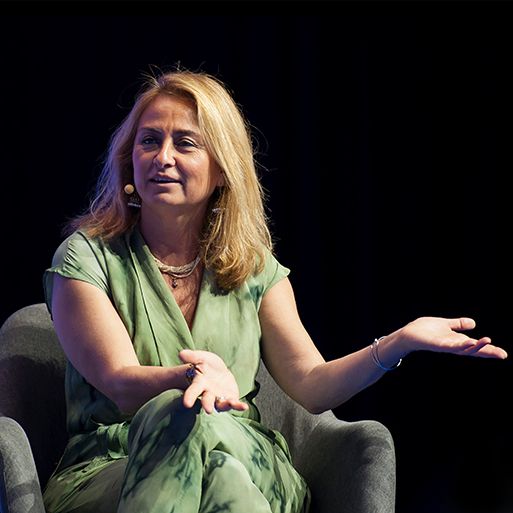3.Calls overview

3.1. ITEA programme size
(Status 31 December 2020)
At the moment, ITEA 3 has 6 Calls running, the Joint Eureka Clusters AI Call 2020 was recently labelled and the 7th ITEA 3 Call is ongoing (submission deadline: 15 February 2021). 34 projects of the ITEA 3 programme have (recently) been completed, 37 projects are running and 11 projects are still waiting for final funding decisions, alongside the 12 projects submitted to ITEA in the Joint Eureka Clusters Call on AI. As for the funded Call sizes, ITEA 3 Call 2 has reached almost €114 m, a real improvement compared to Call 1 which achieved a size of €103 m. ITEA 3 Call 3 was again a smaller Call with €106 m but the size of ITEA 3 Call 4 is back to a better level of €119 m. Due to the funding position of Germany and the delays in the funding decisions in general for Call 5, that Call has developed toward €88 m. The funding decisions for Call 6 are subject to delays and therefore only 6 out of the 20 labelled projects are now running. Due to a lack of funding in the main countries, 5 labelled projects have already been cancelled and a few more projects are likely to be cancelled because of this reason. All this makes it very challenging to give an accurate estimation of the final size for this Call. Taking everything that is now known into consideration, the Call size for ITEA 3 Call 6 is forecasted between €55 m and €63 m. As the Joint AI Call 2020 projects were only labelled in November, it is not possible to give a forecast about the size of this Call yet.
Since ITEA 3 Call 3, the funded Call size has been based on the Funding Contracts. These figures exclude the costs of partners that participate in the Call without any funding. For ITEA 3 Call 6, the figures are not clear yet. A good estimation taking several considerations into account is therefore given. More details about Call sizes per country and per year can be found in Annex A.
3.2. ITEA Calls progress
In the following graph, the progress of the ITEA Calls is represented by several hit rates. These hit rates respectively show the percentage of number of projects, effort and costs actually accomplished or actually running in the ITEA programme compared to the number of projects, effort and costs initially labelled.
The grey areas represent the projects that are still waiting on a funding decision and can therefore still influence the hit rates. The ITEA 3 Calls 3 to 5 are also still subject to some (minor) changes, as change requests are also possible for ongoing projects. Nevertheless, these Calls are rather stable now. All projects in ITEA 3 Call 1 are now complete. Two projects from ITEA 3 Call 2 are still running, but they will both be completed in Q1 of 2021. For ITEA 3 Call 6 and the Joint AI Call 2020, there are still a lot of uncertainties. For ITEA 3 Call 6, a hit rate of 50-55% would be more realistic when we take into account everything that is currently known. For the Joint AI Call 2020, which was only labelled in November 2020, funding decisions have been made in most countries except for Finland. A precise hit rate cannot be calculated yet, since the projects are targeting to start around April – May 2021 as most funding contract procedures are still work in progress. Currently, approximately 30% of the project costs and effort has already been secured for projects that have chosen ITEA as primary Cluster thanks to positive national funding decisions. The hit rate will most likely increase considerably once the funding application results from Finland are known.
Two ITEA projects resulting from the Joint AI Call 2020, ESSENSE-AD and SensAI, will not continue due to the lack of funding and changes in the consortium.
A quick start of a project can have a positive impact on maintaining its original size as partners remain involved and the topic remains relevant, as is also visible in Figure 2. The time from project idea to project start has therefore been a high-level KPI in ITEA for a few years now. As the result of this KPI has not improved over the first ITEA 3 Calls, the ITEA label validity has been implemented since ITEA 3 Call 3.
Due to several circumstances, however, the label validity deadline has not yet resulted in a reduction of the time-to-project. Regarding ITEA 3 Call 5, the time-to-project for this Call is even more than the previous Calls due to funding decisions in Germany and the changed situation in France. For Call 6, a longer time-to-project than average can be expected as well, possibly due to some changes to the new Eureka Clusters Programme, the extra Joint Eureka Clusters Call and internal reorganisations in some countries. At the end of 2020, less than 50% of the Call 6 projects had started, so it is only possible to give a good estimation of the months between idea and project start.
The current status of the ITEA projects is as follows:
| 2020 | 2019 | |||||
|---|---|---|---|---|---|---|
| # | Effort in PY | Cost in € 100k | # | Effort in PY | Cost in € 100k | |
| Labelled during the year | 33 | 3350 | 3605 | 17 | 3064 | 2978 |
| Running at end of the year | 37 | 3943 | 3555 | 44 | 4788 | 4544 |
| Waiting at end of the year | 24 | 2389 | 2398 | 10 | 1834 | 1640 |
| Completed during the year | 16 | 1399 | 1376 | 13 | 1177 | 1213 |
| Cancelled during the year | 9 | 1213 | 1293 | 5 | 458 | 343 |
3.3. ITEA project landscape
To create innovation-driven growth, ITEA needs to focus on future markets and challenges posed by a fast-changing world in which ‘smart’ is the key concept. At present, there are seven main societal challenges that the ITEA Community addresses. The figure below shows the distribution per Call of the ITEA projects across these challenges.
3.4. New projects - ITEA 3 Call 6
The sixth Call of ITEA 3 delivered 22 submitted FPPs, ultimately resulting in 20 labelled ITEA projects involving 2708 PY and 19 countries. Once again, SMEs played a crucial role in the ITEA Community with more than 1314 Person Years (PY) in total. The presence of large industrials is also vital to ITEA’s ongoing success, having provided 710 PY as well as opportunities to increase the impact of the SMEs in terms of global reach and scaling up for the market.
As mentioned above, due to some delays in the funding decisions, it is expected that the size of several Call 6 projects will be reduced. The labelled projects OMDS, Phoenix, AIDOS, EFICAS and ACASIA were already cancelled during the year due to a lack of funding in the main countries.
The themes arising from this Call are:
| Theme | ITEA 3 Call 6 projects |
|---|---|
| Smart engineering | AIToC, COMPAS, DEFAINE, e-INDEX, Muwo, UPSIM, VMAP analytics |
| Smart health | D4Health, INNO4HEALTH, HARMONY, LifeStylePre |
| Safety & Security | EnGRC, Orchestrator, STACK |
| Smart industry | MIRAI |
A short description of each project can be found below:
 AIToC - 19027
AIToC - 19027
Artificial Intelligence supported Tool Chain in Manufacturing Engineering
Project leader:
Volvo Group Trucks Operations (Sweden)
The goal of AITOC is to develop an integrated toolchain for manufacturing engineering that supports decision-making in early phases. To achieve this, the toolchain will support the formalisation and automated analysis of requirements, the computer-aided generation of process plans, simulation models and instructions and the software-supported generation of layouts. In all these dimensions, Artificial Intelligence will be utilised in expert systems and simulations based on data from existing solutions. The interoperability of engineering tools is also in focus and will be developed using standardised neutral data formats.
 COMPAS – 19037
COMPAS – 19037
Compact modelling of high-tech systems for health management and optimization along the supply chain
Project leader:
NXP Semiconductors (Netherlands)
High-tech systems integrate numerous highly complex components. Simulations are necessary at various stages of their design process to ensure mechanical robustness and reliability. COMPAS aims to develop novel, compact models and ultra-compact digital twins. The compact models capture nonlinear, transient and coupled (i.e. multi-physics) situations. The digital twins can self-sufficiently cast decisions (ultimately in real time) for prognostic health management. COMPAS will develop them using the example of the thermo-mechanical reliability of high-tech systems, such as motor control units for automated factories, smart infrastructures (streetlights, power grids) or autonomous vehicles.
 D4Health – 19041
D4Health – 19041
Data-driven decision-making for distributed healthcare
Project leader:
TNO (Netherlands)
The D4Health project will tackle situations in which decision-makers are confronted with complex strategic decisions in the healthcare infrastructure domain. The project aims to gather and bring together datasets that represent the underlying mechanics (demographics, epidemiology, healthcare productivity figures, real estate capacity, ...) and make them interoperable as linked data. Using this data and knowledge rules that are elicited from domain experts, a dashboard can be created that enables decision-makers at various levels to study scenarios.
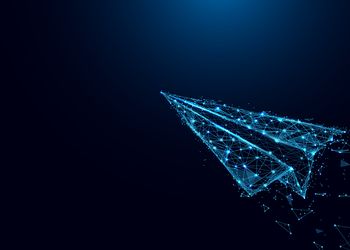 DEFAINE – 19009
DEFAINE – 19009
Design Exploration Framework based on AI for froNt-loaded Engineering
Project leader:
ParaPy BV (Netherlands)
European players are being forced to explore new product development approaches that can drastically reduce lead times. DEFAINE will deliver a Design Exploration Framework to reduce recurring costs in the design of aircraft and wind energy systems and the lead times for design updates. The framework will enable the effective exploitation of the front-loaded product development approach in combination with Artificial Intelligence. Front-loading can significantly reduce the inefficiencies of the current engineering approach by enabling large-scale design exploration at the beginning or even before the start of a project.
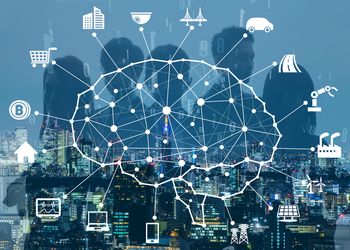 e-INDEX – 19020
e-INDEX – 19020
Electricity Intelligent Demand-Side- and Energy-Management Exchange
Project leader:
RISE Research Institutes of Sweden (Sweden)
Demand-Side Management (DSM) enables the adjustment of loads in the grid to ensure a balanced operation while simultaneously optimising the utilisation of resources in the electrical power system. Today’s DSM systems are limited to local energy grids and the load-balancing solutions within the local grid itself. A larger roll-out of the same idea can be achieved by utilising mathematical planning and machine learning methods. e-INDEX proposes a more holistic level of data integration and decision-making spanning a large-scale, inter-regional connection.
 EnGRC – 19044
EnGRC – 19044
Development of Cyber Security Maturity Model and GRC Platform for Energy Sector
Project leader:
Project leader: Karya Bilişim Ltd. şti (Turkey)
Cybersecurity in the energy sector is a big challenge for countries and organisations. The goal of the EnGRC project is to (1) define a relevant cyber security maturity framework, (2) develop a Governance, Risk and Compliance (GRC) platform to apply the defined framework with the contribution of all stakeholders and (3) process IT and OT data from stakeholders and provide cyber security benchmark information to energy sector authorities on a utilisable business intelligence platform.
 HARMONY – 19019
HARMONY – 19019
Harmonizing IT-eco-systems providing a seamless workflow while integrating multi-vendor applications
Project leader:
Barco (Belgium)
HARMONY will create a harmonised IT ecosystem, providing healthcare professionals with real-time, comprehensive insights into patients’ statuses while integrating all relevant information for diagnosis, treatment selection and follow-up. The project’s main innovation is the ability to compose disease-centric workflows through the vendor-agnostic, seamless integration and interoperability of all relevant applications along the care path. This can be considered a revolution as the care professional (e.g. doctor) can use a single, easy-to-use IT system when performing his/her work.
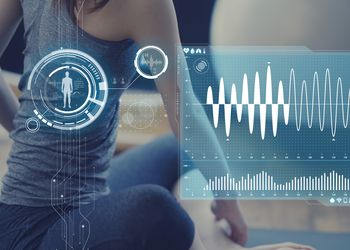 INNO4HEALTH – 19008
INNO4HEALTH – 19008
Stimulate continuous monitoring in personal and physical health
Project leader:
Philips Electronics Nederland BV (Netherlands)
Incorporating Remote Patient Monitoring (RPM) in chronic disease management can significantly improve an individual’s quality of life. INNO4HEALTH aims to stimulate innovation in continuous health and fitness monitoring in order to inform patients and their physician on their readiness regarding surgery and the ability to recover rapidly from invasive treatment. In sports, the same technology will be used to continuously assess fitness and health in order to provide information to athletes and their coaches and to help them optimise their performance during competitions.
 LifeStylePre – 19023
LifeStylePre – 19023
AI-Enabled Solutions for LifeStyle and Health Interventions
Project leader:
University of Oulu (Finland)
The WHO reports that non-communicable diseases (e.g. cardiovascular diseases, cancer, chronic respiratory diseases and diabetes) cause 71% of all deaths globally. Up to 40% of NCD deaths could be prevented, so there is a clear need for individual-centric, technology-based and evidence-based approaches to early detection and structured care. LifeStylePre combines insights from preventive health settings and clinical research. The resulting solutions will be designed to enable personalised lifestyle advice and compliance monitoring for at-risk subjects with the aim of preventing or delaying the onset of irreversible disease burdens.
 MIRAI – 19034
MIRAI – 19034
Machine Intelligence for smart/sustainable planning/operation of IoT/ Edge computing applications
Project leader:
NOS Inovação (Portugal)
The standard approach of IoT applications when leveraging cloud infrastructure to address constraints at the level of end and edge nodes is no longer viable, especially for applications with hard real-time requirements and increasing AI usage. This project will develop MIRAI Framework Building Blocks (MFBB) based on AI techniques in order to enable the smart and sustainable planning and operation of IoT and edge computing applications. This will supplement the traditional vertical scaling approach to the cloud with the horizontal scaling of IoT and edge computing applications amongst edge devices.
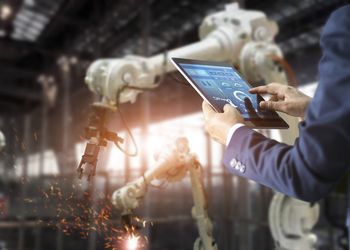 Muwo – 19022
Muwo – 19022
Multi-method workspace for highly scalable production lines
Project leader:
ACD (Turkey)
Muwo aims to create an opportunity to use production systems more effectively through flexible scaling. Scalability is achieved by the development of smart hardware interfaces. This will allow workstations to advance to multi-method workstations that support both manual and automated processes. Additionally, workstations can combine different processes. A transmutable simulation validates the workstation configuration and a process combiner optimises the production configuration using AI/ML methods. Through this, Muwo improves the design and operation of production systems.
 Orchestrator – 19039
Orchestrator – 19039
Artificial Intelligence Based Network Operation Center Orchestration
Project leader:
Cekino Savunma Elektronik ve Bilisim A.S. (Turkey)
Orchestrator aims to develop an AI- and ML-supported network monitoring, management and cyber security platform. The main focus is on the monitoring and management of highly dynamic, large-scale hybrid networks, as well as ensuring the cyber security of such networks by employing AI- and ML-based solutions for acting against emergent attacks at machine speed. The Orchestrator platform will revolutionise the experience for security analysts by providing proactive capabilities via automated remediation actions against cyberattacks based either on Robotic Response or Cognitive Response.
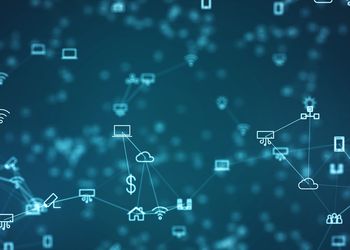 STACK – 19045
STACK – 19045
Smart, Attack-Resistant Internet of Things Networks
Project leader:
RISE - Research institutes of Sweden (Sweden)
The goal of STACK is to let IoT networks maintain their functionality in both benign environments and more challenging situations, such as when IoT networks are under attack or exposed to harsh radio environments and cross-technology interference. Solving these challenges will enable a new class of IoT applications that provide a certain Quality of Service (QoS), even when under attack. Our major innovations towards this goal include more robust IoT communication, attack detection and mitigation by performance and interference monitoring and smart algorithms that leverage a tight integration of IoT devices with a smart edge.
 UPSIM – 19006
UPSIM – 19006
Unleash Potentials in Simulation
Project leader:
Virtual Vehicle Research GmbH (Germany)
Nowadays, simulation is used for design space exploration, virtual testing or predictive maintenance for supporting early-stage product decisions. Most importantly, real testing is ultimately used to assure product quality and certification. The aim of UPSIM is to enable companies to safely collaborate on simulations in a repeatable, reliable and robust manner and to implement simulations in a Credible Digital Twin setting as a strategic capability in order for them to become an important factor in quality, cost, time-to-market and overall competitiveness.
 VMAP analytics – 19007
VMAP analytics – 19007
Smart Analytics for Multi-Scale Material and Manufacturing Modelling
Project leader:
Swerim AB (Sweden)
Many companies have already introduced Digital Twins. However, if producers of advanced materials and complex parts need a more detailed look into the ongoing manufacturing processes and changing material properties, they will not find solutions today. The vision of VMAP analytics is to enable the realisation of smart Digital Twins for materials and manufacturing design tasks. The VMAP interface standard will open the initial VMAP standard for multi-scale models, sensor and measurement data and information from production machines. VMAP analytics will provide an open ontology for engineering processes in materials and manufacturing design.
3.5. New projects – Joint Eureka Clusters AI Call 2020
Next to the 'usual' single Cluster Calls, the first Joint Eureka Clusters Call on Artificial Intelligence (AI) was organised in 2020, as the Eureka Clusters CELTIC-NEXT, EUROGIA, PENTA-EURIPIDES and ITEA, perceived a common cross-domain interest in developing, adapting and utilising emerging AI within and across their focus areas. The aim of this Call was to boost the productivity and competitiveness of European industries through the adoption and use of AI systems and services.
The Joint Eureka Clusters AI Call 2020 attracted a lot of interest; at the deadline on 15 June, over 40 project proposals had been received, of which 35 indicated ITEA as the main Cluster and another had ITEA as a secondary Cluster. As 8 proposals were not eligible, 28 were evaluated with a total of 1448 Person Years, resulting in 12 labelled AI projects from 15 different countries with ITEA as the main Cluster and 1 with ITEA as a secondary Cluster. The labelled projects are currently submitting their national funding applications. Due to the lack of funding and changes in the consortium, the projects ESSENSE-AD and SensAI will not continue.
The main themes arising from the ITEA projects in this Joint AI Call 2020 are:
| Theme | Eureka Clusters AI Call 2020 |
|---|---|
| Smart engineering | AMPlify, ASIMOV, EFICAS, IML4E |
| Safety and Security | AIS²afe, IML4E, Spectralligence |
| Smart health | RoboNimbus, SHERPA, Spectralligence |
| Smart industry | AISSI, AMPlify |
| Smart mobility | AIS²afe, SHERPA |
| Smart cities | AIDEMS, AI4PV (ITEA as secondary Cluster) |
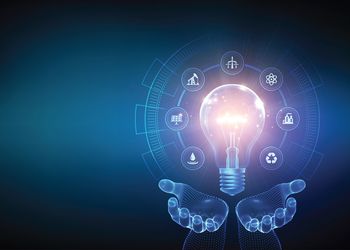 AIDEMS - 20201
AIDEMS - 20201
AI-Enabled Demand Side Management for Energy Sustainability
Project leader:
RISE - Research institutes of Sweden (Sweden)
Renewable electricity networks are strained by the increased demand for high-power charging and the volatility of renewable sources. Demand Side Management (DSM) is a framework that addresses this challenge through information sharing, integrated planning and smarter decision-making across the network. However, DSM implementation suffers from data integration, security and standardisation problems. AIDEMIS’ objective is to power DSM platforms with new data models and machine learning algorithms that balance finding optimal solutions (that account for greater parts of the network) with search tractability.
 AIS²afe - 20214
AIS²afe - 20214
AI for Safety and Security Assurance of Automated Vehicles
Project leader:
RISE - Research institutes of Sweden (Sweden)
Companies are currently investing more in IT cyber security and cyber security management than in cybersecurity software for vehicles. However, regulatory initiatives are driving Europe to become a first mover in these domains. There is a great need to upskill safety engineers, produce (cyber)security talent and improve the knowledge and cooperation between firms as well as safety and security engineers. AIS2afe addresses this through innovative measures for integrating the safety and security disciplines by developing AI technology and methodologies and tools targeting AI technology.
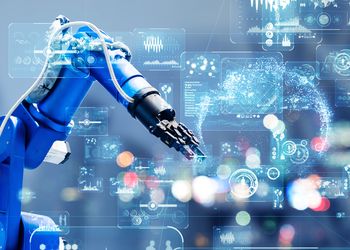 AISSI - 202127
AISSI - 202127
Autonomous Integrated Scheduling for Semiconductor Industry
Project leader:
Robert Bosch GmbH (Germany)
Digitalisation is driving increased demand for microchips and shortening the product lifecycle and the high variety of customer-specific devices is leading to a growing need for high-mix low-volume (HMLV) semiconductor production. The AISSI project proposes sourcing, developing, integrating and applying novel AI-based approaches. By applying reinforcement learning and knowledge graphs in a continual improvement framework for autonomous, integrated production and maintenance scheduling, competition can be outperformed in terms of efficiency, cost-effectiveness and quality.
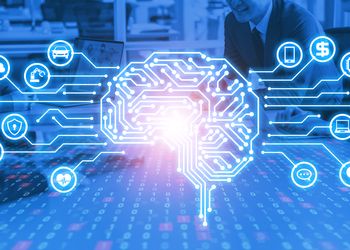 AMPlify - 20220
AMPlify - 20220
AI Modelling Platform
Project leader:
Software AG (Germany)
For many years, industrial system builders have been collecting product and process data in different formats and tools, but the full potential benefits are often neither analysed nor correlated and utilised. There is a widespread imbalance in the supply and demand of qualified AI experts in industry, which challenges today’s technological development. The AMPlify project will create an AI Knowledge Portal to provide guidance on the application of available AI solutions and platforms and support in finding available experts to make AI tools and algorithms applicable and more end-user friendly.
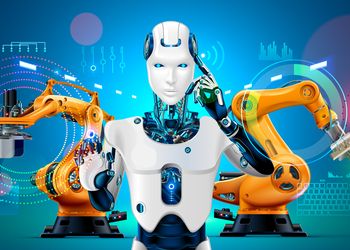 ASIMOV - 20216
ASIMOV - 20216
AI training using Simulated Instruments for Machine Optimization and Verification
Project leader:
Thermo Fisher Scientific (the Netherlands)
With the rise of high-tech cyber-physical systems (CPS) in all areas of industry and society, the user-friendliness and up-times of these systems are becoming increasingly important. Keeping the control parameters of CPS in their correct operating window is a particularly large challenge, such as in electron microscopy, unmanned utility vehicles and pulp ∓ paper process control. ASIMOV will increase the autonomy and self-optimisation of CPS by creating physically realistic Digital Twins of these systems and training innovative AI algorithms for CPS control using these Digital Twins.
 EFICAS - 20229
EFICAS - 20229
Energy Efficient Heterogeneous AI-Platform for Smart Mobile and Embedded Systems
Project leader:
Siemens AG (Germany)
Essentially all mobile applications are severely power limited, which blocks huge business cases. Increasing functional complexity in mobile and autonomous applications impacts the computational load by increasing the power demands of embedded platforms. EFICAS introduces a generic and scalable software platform supporting the energy-efficient deployment of AI algorithms on the multicore heterogeneous computation technologies. It supports all technology solutions, including localised and distributed computation settings as well as cloud offloading. It addresses resource allocation at runtime and hybrid coherent operation with optimised task allocation at design time.
 IML4E - 20219
IML4E - 20219
Industrial Machine Learning for Enterprises
Project leader:
Fraunhofer FOKUS (Germany)
Smart software solutions including AI and machine learning (ML) have shown a great potential to automate processes that were not accessible to automation. Since AI and ML differ from classical software development regarding fundamental activities and processes, it is unclear how AI and ML can be integrated into existing industrial-grade software development processes. Addressing the industrialisation of ML development and operations, the IML4E project will develop the IML4E framework, covering methods, techniques and tools dedicated to delivering and maintaining high-quality smart software in efficient, scalable and manageable processes.
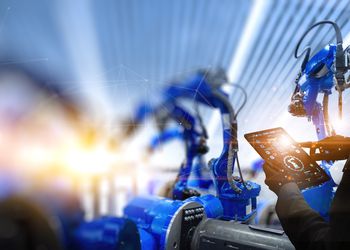 RoboNimbus - 20231
RoboNimbus - 20231
Smart Platform for Robot Management and Coordination with AI powered Cloud
Project leader:
BYS GRUP Bilişim Sistemleri Danişmanlik Ticaret ve Sanayi
(Turkey)
Robots are transforming automation processes across all industries. As robot technologies improve, robots become increasingly capable and cheaper, incentivising their use in ever more sophisticated processes. To capitalise on this trend, the RoboNimbus project envisions an AI-powered, cloud-based, all-in-one robot management platform that will allow the user to connect, monitor, control and maintain robot fleets with ease. RoboNimbus will leverage state-of-the-art technologies including IoT, Cloud Computing, Virtual Reality, Augmented Reality and Predictive Maintenance to create a truly futuristic robot management platform.
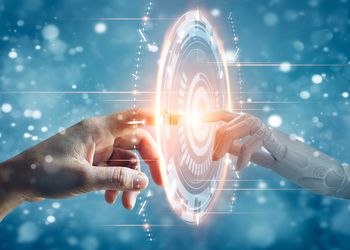 SHERPA - 20206
SHERPA - 20206
Smart Human Centered Automation for Professional Applications
Project leader:
Philips Medical Systems Nederland (the Netherlands)
In various professional and safety critical applications, collaboration between the user and the machine is crucial for the correct and safe execution of tasks, such as in medical imaging equipment and vehicles. The user is part of the closed loop of the system, but information overload and complexity often lead to fatigue, stress or confusion, resulting in errors, safety issues or accidents. The SHERPA project will develop AI-based solutions to assist and automate system operation and make complex Human-Machine Interaction in medical and automotive applications more intuitive.
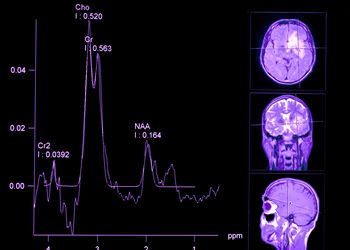 Spectralligence - 20209
Spectralligence - 20209
Spectral Analysis in life sciences and materials sciences through Artificial Intelligence
Project leader:
Philips (the Netherlands)
Molecular and Atomic Spectroscopy is a well-established set of technologies that use the electromagnetic spectrum to generate unique fingerprints of molecular structures, with a broad set of applications in chemistry, medicine and environmental and safety services. A significant reduction in dependence on human experts is necessary to bring novel technologies to fruition for ever expanding opportunities. The Spectralligence project aims to demonstrate that cross-domain-validated Neural Networks for spectral analysis (leveraging innovations in micro-electronics and component miniaturisation) can significantly accelerate market growth and technology adoption.
In addition, there was one project that chose ITEA as a secondary Cluster:
 AI4PV - 20233
AI4PV - 20233
Artificial Intelligence for Operation and Maintenance of PV Plants
Project leader:
EDP N.E.W. R&D – Centre for New Energy Technologies
(Portugal)
The Paris Agreement has defined the targets to limit global warming to 1.5° with a massive contribution by renewable energy. Industry has been working to improve the performance of photovoltaic (PV) systems, but unsolved challenges remain concerning reliability and robustness, hindering a lean integration in the electrical system. In this context, the main goals of the AI4PV project are to reduce LCOE and increase the operational performance of PV plants through the hybrid use of physical models, AI and Digital Twins.
Other chapters
Use the arrows to view more chapters
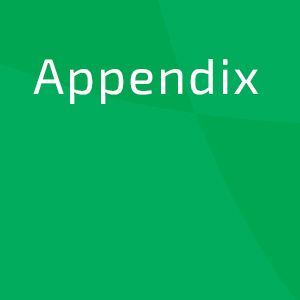
Appendix A. Call statistics per country and per year
Participation in person-years per Call and per country per year


